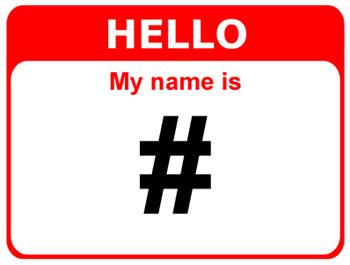• Introducing #NGIF: Nick's Great Information Friday
 Friday, November 11, 2011 at 9:28 AM by
Friday, November 11, 2011 at 9:28 AM by  Nick DeMartino
Nick DeMartino One of the first widespread uses of the #hashtag convention on Twitter was #FollowFriday, a goofy, but effective way to spread the love all over one's favorite fellow "tweeps." Kind of a #TGIF for the twitterati.
In tribute to this enduring social media meme, I'm starting #NGIF, or Nick's Great Information Friday, in which I shall review my favorite tweets of the previous week.
Why?
Well, mainly because it’s so easy to miss the good stuff. Services like Twitter, Facebook, Google+ and other social networks are "life streams” – you must be on the shore watching as the information flows by.
Twitter and the others offer filtering systems that help (Lists, Circles, etc.). Even better third-party tools automate curation and discovery in useful ways (Summify and Zite are my current favorites. And of course, we all subscribe to newsletters to get information shoved into our crowded in-boxes.

Which brings me back to #NGIF, my humble attempt to call your attention to some interesting items to chew over after a busy week.
Transmedia & Story Telling
It’s only natural that transmedia storytelling was on my mind this week, since I attended two events (#DIYDAYS and StoryWorld Conference), and posted my thoughts as “Stories and Worlds: What the Transmedia Movement has to Teach… (and to Learn)” which appeared here on my blog and was published today on Tribeca’s Future of Film
I also learned a lot from Dan Levy’s coverage of #swc: “Finding the Story: Five Lessons from StoryWorld 2011
Brian Clark, who was everywhere at #swc, began a series of posts this week on transmedia business models at Henry Jenkins’ blog to spark a debate among practitioners about how to use lessons from past movements to move beyond what he calls the “patronage” model. This post will become more valuable over time, so bookmark it. I have.
Along the way, as is often the case, I turned to Quora during the course of my writing, only to discover a really interesting thread called “Storytelling: How will the craft of storytelling change in the future?
Social Media
I was preparing a presentation to a group of college film and television professors about the future of television this week and, like many pundits, used the phrase “the social graph,” which is how Facebook describes the extended grid of people and brands generated by your voluntary associations and behaviors. No wonder this post on the Pinboard blog by Maciej Ceglowski stood out: “The Social Graph is Neither."
As with really good posts, it prompted a counter-post of sorts, this one from Kevin Marks: “Our brains make the social graph real."
Technology
Living up to its title, this rant makes the case that touch-screen interfaces introduced by Apple are not the natural way we use our hands and fingers. I love the presentational form and the passion: “A Brief Rant on the Future of Interaction Design."
I watched last year with dismay at the struggle between Apple and Adobe over Flash, mainly because lots of websites I like were using Flash video and I couldn’t watch them on my new iPad. Even after Steve Jobs’ issued a rare public explanation, I didn’t really understand the technical side of the argument. Most commenters at the time chalked it up to a grudge match between the companies, or another example of Steve Jobs’ control fetish. This post, following Adobe’s announcement that it would cease Flash support on mobile platforms, provides much-needed context: “Why Adobe Failed with Flash and Where Startups Can Swoop In”
“What happens to ownership as the world goes digital?” is a smart GigaOm overview of the implications of cloud-based dependence as more and more content is available on cloud-enabled models, like Amazon’s new e-book rental system.
The meteoric rise of the app, not only for mobile devices, but for television and even the desktop has been debated as a return to the walled garden of earlier phases of the web (despite the obvious success of the format). Now there is pushback, at least from Mozilla and other supporters of HTML5, through the development of new tools that mimic the seamless content experiences of apps build for a native platform. If this summary interests you, check out Jolie O’Dell’s Venture Beat post: “The mobile app is going the way of the CD-ROM: To the dustbin of history.”
Start-ups & Finance
Linden Labs' Philip Rosedale has build a new company called Coffee & Power that takes the concept of the “Work Exchange,” pioneered by Amazon Mechanical Turk, into the physical world.
Spreecast and LiveLead are companies that tackle social video from different angles. Also this week, I had a chat with the founder of SceneChat, which wraps engagement tools around video in an interesting way. Check out their demo's here.
I was fascinated by how Hollywood and Silicon Valley came together to inspire “Backlit” a new Teen E-Book Publisher.
Investor Gary Morgenthaler was present at creation of Siri, the voice-command system that powers the new generation of iPhones. In this really interesting deep-dive we learn the technology problems that Siri solved, and why it’s not just the voice-command technology that should have Google worried. “Explains Exactly How Siri Will Eat Google’s Lunch”
Finally, Business Insider updated my understanding of the evolution of start-up funding in the past few years in “The Way Companies Are Getting Financed Is Completely Changing."
Please comment here on the site about the usefulness of this kind of summary post, about any of the links I've provided, or add a few links of your own.
Reader Comments